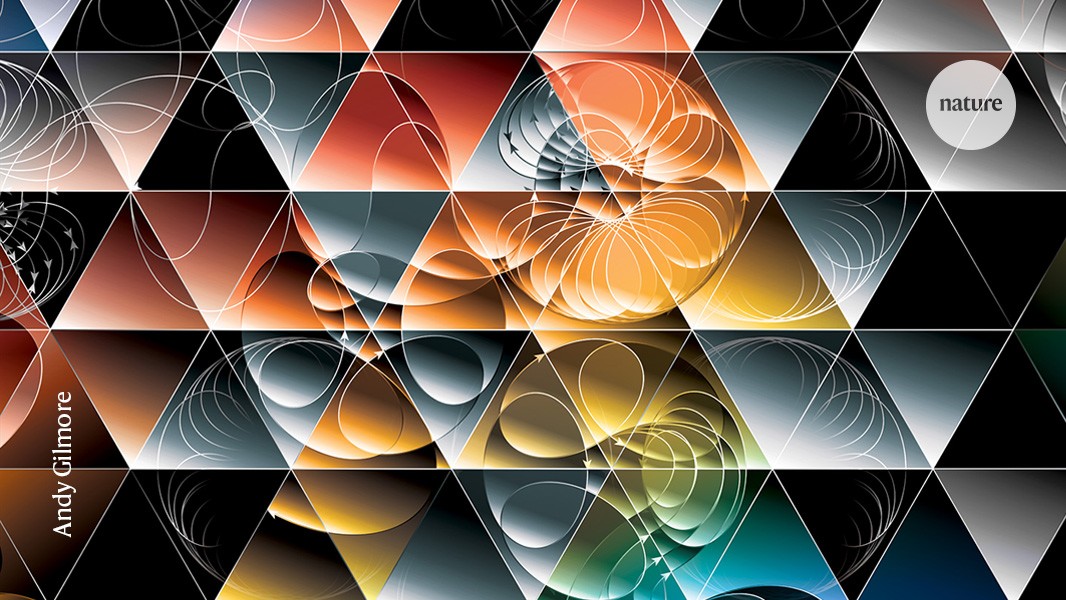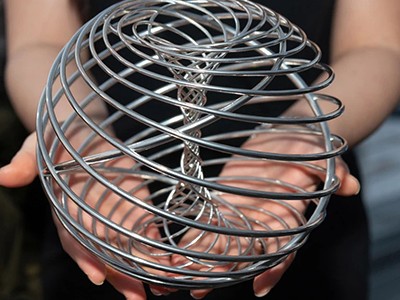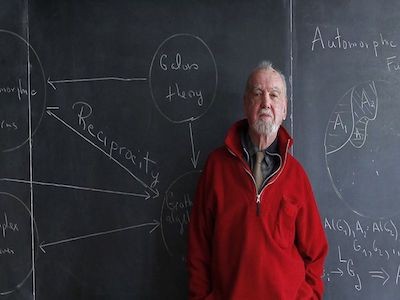One of the biggest stories in science is quietly playing out in the world of abstract mathematics. Over the course of last year, researchers fulfilled a decades-old dream when they unveiled a proof of the geometric Langlands conjecture — a key piece of a group of interconnected problems called the Langlands programme. The proof — a gargantuan effort — validates the intricate and far-reaching Langlands programme, which is often hailed as the grand unified theory of mathematics but remains largely unproven. Yet the work’s true impact might lie not in what it settles, but in the new avenues of inquiry it reveals.
“It’s a huge triumph. But rather than closing a door, this proof throws open a dozen others,” says David Ben-Zvi at the University of Texas at Austin, who was not involved with the work.
‘Mind blowing’: quantum computer untangles the mathematics of knots
Proving the geometric Langlands conjecture has long been considered one of the deepest and most enigmatic pursuits in modern mathematics. Ultimately, it took a team of nine mathematicians to crack the problem, in a series of five papers spanning almost 1,000 pages1–5. The group was led by Dennis Gaitsgory at the Max Planck Institute for Mathematics in Bonn, Germany, and Sam Raskin at Yale University in New Haven, Connecticut, who completed his PhD with Gaitsgory in 2014.
The magnitude of their accomplishment was quickly recognized by the mathematical community: in April, Gaitsgory received the US$3-million Breakthrough Prize in Mathematics, and Raskin was awarded a New Horizons prize for promising early-career mathematicians. Like many landmark results in mathematics, the proof promises to forge bridges between different areas, allowing the tools of one domain to tackle intractable problems in another. All told, it’s a heady time for researchers in these fields.
“It gives us the strongest evidence yet that something we’ve believed in for decades is true,” says Ben-Zvi. “Now we can finally ask: what does it really mean?”
The hole story
The Langlands programme traces its origins back 60 years, to the work of a young Canadian mathematician named Robert Langlands, who set out his vision in a handwritten letter to the leading mathematician André Weil. Over the decades, the programme attracted increasing attention from mathematicians, who marvelled at how all-encompassing it was. It was that feature that led Edward Frenkel at the University of California, Berkeley, who has made key contributions to the geometric side, to call it the grand unified theory of mathematics.
Langlands’ aim was to connect two very separate major branches of mathematics — number theory (the study of integers) and harmonic analysis (the study of how complicated signals or functions break down into simple waves). A special case of the Langlands programme is the epic proof that Andrew Wiles published, in 1995, of Fermat’s last theorem — that no three positive integers a, b and c satisfy the equation an + bn = cn if n is an integer greater than 2.
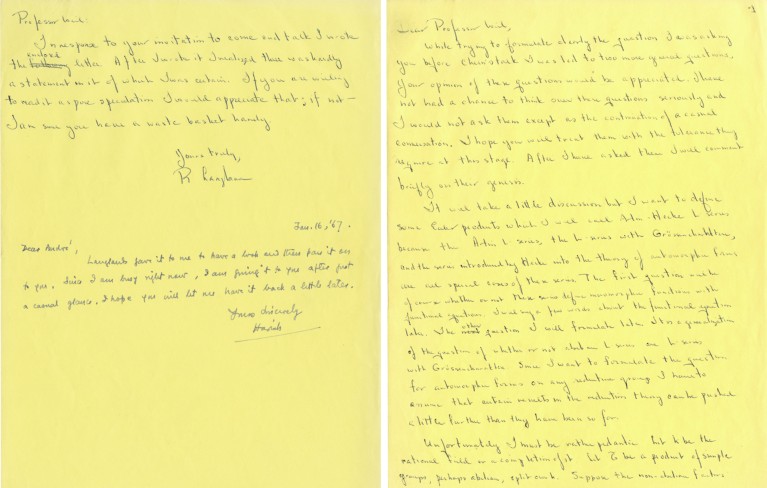
Robert Langlands discussed his ideas in a letter to André Weil in 1967. On the cover page to the letter (left), Langlands says, “If you are willing to read it as pure speculation I would appreciate that; if not — I am sure you have a waste basket handy.”Credit: Institute for Advanced Study (Princeton, N.J.) Shelby White and Leon Levy Archives Center
The geometric Langlands conjecture was first developed in the 1980s by Vladimir Drinfeld, then at the B. Verkin Institute for Low Temperature Physics and Engineering in Kharkiv, Ukraine. Like the original or arithmetic form of the Langlands conjecture, the geometric conjecture also makes a type of connection: it suggests a correspondence between two different sets of mathematical objects. Although the fields linked by the arithmetic form of Langlands are separate mathematical ‘worlds’, the differences between the two sides of the geometric conjecture are not so pronounced. Both concern properties of Riemann surfaces, which are ‘complex manifolds’ — structures with coordinates that are complex numbers (with real and imaginary parts). These manifolds can take the form of spheres, doughnuts or pretzel-like shapes with two or more holes.
Many mathematicians strongly suspect that the ‘closeness’ of the two sides means the proof of the geometric Langlands conjecture could eventually offer some traction for furthering the arithmetic version, in which the relationships are more mysterious. “To truly understand the Langlands correspondence, we have to realize that the ‘two worlds’ in it are not that different — rather, they are two facets of one and the same world,” says Frenkel. “Seeing this unity requires a new vision, a new understanding. We are still far from it in the original formulation. But the fact that, for Riemann surfaces, the two worlds sort of coalesce means that we are getting closer to finding this secret unity underlying the whole programme,” he adds.
Obesity-drug pioneers and 13,508 physicists win US$3-million Breakthrough Prizes
One side of the geometric Langlands conjecture concerns a characteristic called a fundamental group. In basic terms, the fundamental group of a Riemann surface describes all the distinct ways in which loops can be tied around it. With a doughnut, for example, a loop can run horizontally around the outer edge or vertically through the hole and around the outside. The geometric Langlands deals with the ‘representation’ of a surface’s fundamental group, which expresses the group’s properties as matrices (grids of numbers).
The other side of the geometric Langlands programme has to do with special kinds of ‘sheaves’. These tools of algebraic geometry are rules that allot ‘vector spaces’ (where vectors — arrows — can be added and multiplied) to points on a manifold in much the same way as a function describing a gravitational field, say, can assign numbers for the strength of the field to points in standard 3D space.
Bridgework in progress
Work on bridging this divide began back in the 1990s. Using earlier work on Kac–Moody algebras, which ‘translate’ between representations and sheaves, Drinfeld and Alexander Beilinson, both now at the University of Chicago, Illinois, described how to build the right kind of sheaves to make the connection. Their paper (see go.nature.com/4ndp5ev), nearly 400 pages long, has never been formally published. Gaitsgory, together with Dima Arinkin at the University of Wisconsin–Madison, made this relationship more precise in 20126; then, working alone, Gaitsgory followed up with a step-by-step outline of how the geometric Langlands might be proved7.
“The conjecture as such sounds pretty baroque — and not just to outsiders,” says Ben-Zvi. “I think people are much more excited about the proof of geometric Langlands now than they would have been a decade ago, because we understand better why it’s the right kind of question to ask, and why it might be useful for things in number theory.”
One of the most immediate consequences of the new proof is the boost it provides to research on ‘local’ versions of the different Langlands conjectures, which ‘zoom in’ on particular objects in the ‘global’ settings. In the case of the geometric Langlands programme, for example, the local version is concerned with the properties of objects associated with discs around points on a Riemann surface — rather than the whole manifold, which is the domain of the ‘global’ version.
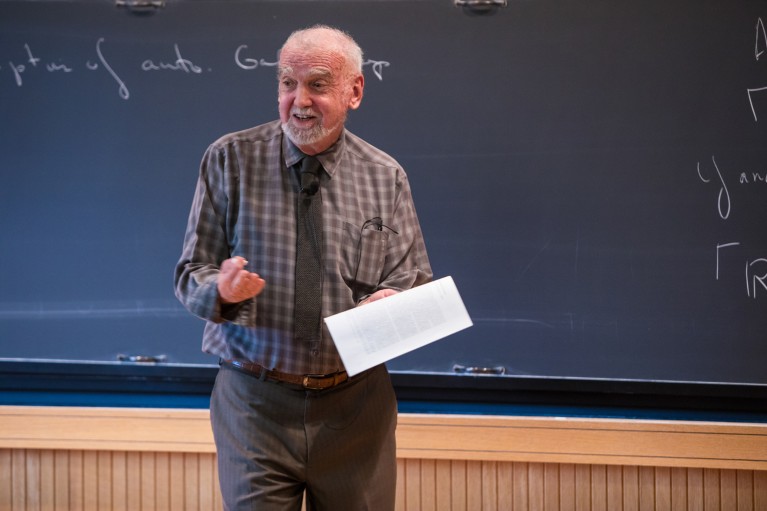
Robert Langlands in 2016.Credit: Dan Komoda, Institute for Advanced Study
Peter Scholze, at the Max Planck Institute for Mathematics, has been instrumental in forging connections between the local and global Langlands programmes. But initially, even he was daunted by the geometric side.
“To tell the truth,” Scholze says, “until around 2014, the geometric Langlands programme looked incomprehensible to me.” That changed when Laurent Fargues at the Institute of Mathematics of Jussieu in Paris proposed a reimagining of the local arithmetic Langlands conjectures in geometrical terms8. Working together, Scholze and Fargues spent seven years showing that this strategy could help to make progress on proving a version of the local arithmetic Langlands conjecture9 concerning the p-adic numbers, which involve the primes and their powers. They connected it to the global geometric version that the team led by Gaitsgory and Raskin later proved.
The papers by Scholze and Fargues built what Scholze describes as a “wormhole” between the two areas, allowing methods and structures from the global geometric Langlands programme to be imported into the local arithmetic context. “So I’m really happy about the proof,” Scholze says. “I think it’s a tremendous achievement and am mining it for parts.”
Quantum connection
According to some researchers, one of the most surprising bridges that the geometric Langlands programme has built is to theoretical physics. Since the 1970s, physicists have explored a quantum analogue of a classical symmetry: that swapping electric and magnetic fields in Maxwell’s equations, which describe how the two fields interact, leaves the equations unchanged. This elegant symmetry underpins a broader idea in quantum field theory, known as S-duality.
‘Grand unified theory of maths’ nets Abel Prize
In 2007, Edward Witten at the Institute for Advanced Study (IAS) in Princeton, New Jersey, and Anton Kapustin at the California Institute of Technology in Pasadena were able to show10 that S-duality in certain four-dimensional gauge theories — a class of theories that includes the standard model of particle physics — possesses the same symmetry that appears in the geometric Langlands correspondence. “Seemingly esoteric notions of the geometric Langlands program,” the pair wrote, “arise naturally from the physics.”
Although their theories include hypothetical particles, called superpartners, that have never been observed, their insight suggests that geometric Langlands is not just a rarefied idea in pure mathematics; instead, it can be seen as a shadow of a deep symmetry in quantum physics. “I do think it is fascinating that the Langlands programme has this counterpart in quantum field theory,” says Witten. “And I think this might eventually be important in the mathematical development of the Langlands programme.”
Among the first to take that possibility seriously was Minhyong Kim, director of the International Centre for Mathematical Sciences in Edinburgh, UK. “Even simple-sounding problems in number theory — like Fermat’s last theorem — are hard,” he says. One way to make headway is by using ideas from physics, like those in Witten and Kapustin’s work, as a sort of metaphor for number-theoretic problems, such as the arithmetic Langlands conjecture. Kim is working on making these metaphors more rigorous. “I take various constructions in quantum field theory and try to cook up precise number-theoretic analogues,” he says.
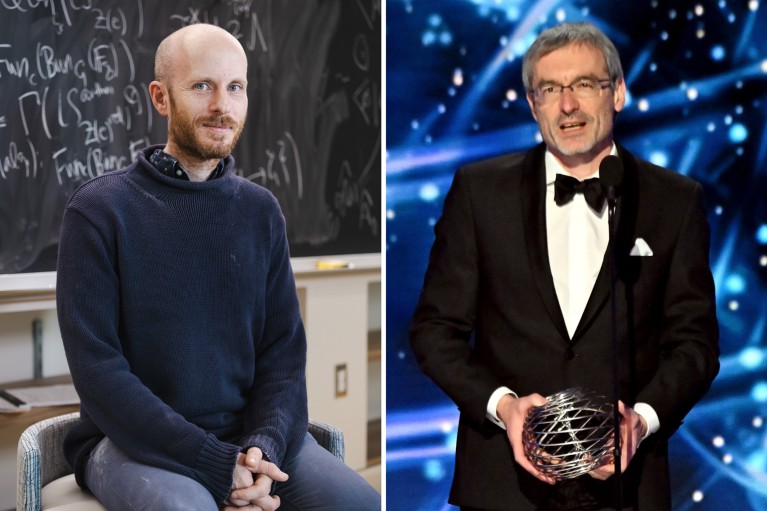
Sam Raskin (left) and Dennis Gaitsgory led the team that proved the geometric Langlands conjecture.Credit: Dan Renzetti/Yale University, Lester Cohen/Getty Images for Breakthrough Prize


